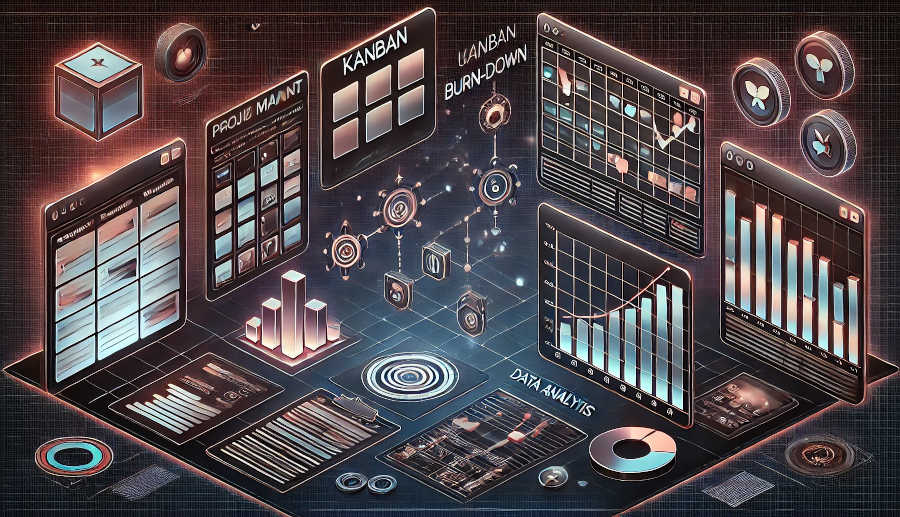TR (Technical Review) is a crucial process in product development, especially within the framework of IPD (Integrated Product Development). It serves as a checkpoint to ensure that the technical aspects of a product meet the required standards and are on track for successful commercialization. However, there are several common misunderstandings that can occur during TR reviews, which may lead to inefficiencies, delays, or even product failures. Understanding these misunderstandings and having effective response strategies is essential for project managers and teams involved in IPD. This article will delve into three such misunderstandings and provide practical strategies to address them.
Misunderstanding 1: Treating TR Review as a Mere Formality
One of the most prevalent misunderstandings in TR reviews is regarding it as a routine, box - ticking exercise. Many teams view the TR review process as something they have to go through without fully appreciating its significance. They may submit incomplete or inaccurate documentation, assuming that the review is just a formality and will not have any real impact on the project. This attitude can be extremely detrimental.
When a TR review is treated as a formality, the valuable insights and feedback that could be obtained from a thorough evaluation are lost. The review is designed to identify potential technical risks, gaps in the design, or areas where the product may not meet the customer's requirements. By neglecting these aspects, the project may proceed with undetected issues, which can surface later in the development cycle, often at a much higher cost to fix. For example, if a software product is being developed and the TR review fails to identify a compatibility issue with a key operating system, it could lead to significant rework and delays when the problem is finally discovered during testing or after the product is released.
To address this misunderstanding, project managers should emphasize the importance of the TR review from the very beginning. They need to communicate to the team that the review is not a superficial process but a critical step in ensuring the success of the product. This can be achieved through training sessions, where the purpose and benefits of the TR review are clearly explained. Additionally, setting clear expectations about the quality of documentation and the level of detail required for the review can help teams take it more seriously. For instance, providing a detailed checklist of what should be included in the review materials can guide the team to prepare thoroughly.
Misunderstanding 2: Lack of Clear Definition of Review Criteria
Another common misunderstanding in TR reviews is the lack of a clear definition of review criteria. Without well - defined criteria, reviewers may have different interpretations of what constitutes a successful review. This can lead to inconsistent evaluations, where some reviewers may pass a product based on one set of unspoken standards, while others may reject it based on different expectations.

The absence of clear review criteria also makes it difficult for the product development team to know what they are being judged on. They may spend time and resources focusing on aspects that are not relevant to the review while neglecting areas that are crucial. For example, in a hardware product development, if the review criteria do not clearly state the requirements for power consumption, the team may over - emphasize other features and fail to meet the power - related specifications. This lack of clarity can slow down the review process as there may be back - and - forth discussions to clarify what is actually expected.
To overcome this issue, it is essential to establish clear and detailed review criteria well in advance. These criteria should be communicated to all stakeholders, including the review team and the product development team. The criteria should cover all relevant technical aspects, such as functionality, performance, reliability, and compatibility. For example, in the case of a mobile application, the review criteria could include details about the app's response time, the number of concurrent users it can handle, and its compatibility with different mobile devices and operating systems. By having these clear criteria, both the reviewers and the development team are on the same page, which streamlines the review process and ensures more accurate evaluations.
Misunderstanding 3: Ignoring the Role of Cross - Functional Teams in TR Review
In IPD, cross - functional teams play a vital role in product development, and this is no different in TR reviews. However, a common misunderstanding is to overlook the input and expertise of these cross - functional teams. Some may assume that the technical review is solely the responsibility of the engineering or technical team, forgetting that other functions such as marketing, manufacturing, and quality assurance also have valuable insights to offer.
Marketing teams can provide crucial information about customer needs and market trends. Their input can help ensure that the product's technical features align with what the market demands. For example, they may be aware of emerging customer preferences for certain user - interface elements or additional features that could give the product a competitive edge. Manufacturing teams, on the other hand, can offer insights into the manufacturability of the product. They can identify potential issues in the design that may cause difficulties or increase costs during production. Quality assurance teams can contribute by setting quality standards and ensuring that the product meets them. Ignoring the input of these cross - functional teams can result in a product that may be technically sound but fails to meet market needs, is difficult to manufacture, or has quality issues.
To address this misunderstanding, project managers should actively involve cross - functional teams in the TR review process. This can be done by creating a collaborative environment where all team members feel comfortable sharing their opinions. For example, setting up joint review meetings where representatives from different functions can discuss the product's technical aspects together. Additionally, providing training or orientation sessions for non - technical team members on the technical concepts relevant to the review can help them contribute more effectively. By leveraging the diverse expertise of cross - functional teams, the TR review can be more comprehensive and lead to a better - quality product.
Conclusion
In conclusion, understanding and addressing the common misunderstandings in TR reviews is of utmost importance in IPD projects. Treating TR reviews as a mere formality can lead to undetected issues that can derail the project later on. By emphasizing the significance of the review and setting clear expectations, teams can ensure that the process is taken seriously and valuable insights are gained. The lack of clear review criteria can cause confusion and inefficiencies, but by establishing well - defined criteria in advance and communicating them to all stakeholders, the review process can be made more consistent and accurate. Finally, ignoring the role of cross - functional teams in TR reviews can result in a product that fails to meet various aspects of market needs, manufacturability, and quality. Actively involving these teams and creating a collaborative environment can enhance the review process and contribute to the overall success of the product development project. By being aware of these misunderstandings and implementing the appropriate response strategies, project managers can improve the effectiveness of TR reviews and increase the likelihood of delivering high - quality products that meet market demands in a timely manner. This not only benefits the individual project but also the long - term success of the organization in a competitive business landscape.
ARTICLE TITLE :3 common misunderstandings and response strategies in TR review ,AUTHOR :ITpmlib

















